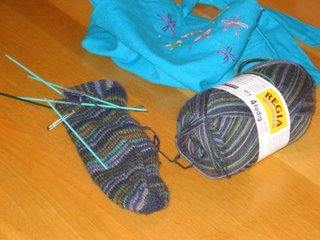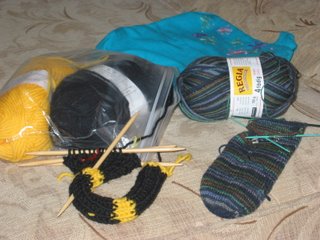The continuing saga of our adventures using RightStart Geometry and RightStart B. I have a 10yo and a 6yo who have average math ability.The 10yo has done Miquon, Singapore, RightStart Transitions, Level D and Level E; RightStart has saved her from a life a math phobia.
On Tuesdays I upload an update of what we did in math for the week.
RightStart Geometry:
Lesson 49 Other Congruent Triangles (SAS, ASA)
The Student is to start off by doing 4 problems on the worksheet, then reading the lesson, then finishing the worksheet. The final problem makes use of the recent lessons on transversals and alternate angles (lesson 47). Kid1 gets a different answer for the last problem then that shown in the book. We look it over together, discuss why various answers may be true. I tell her that she will eventually be able to write up this discussion as a “proof”. I mean to email Dr. Cotter and ask if the answer sheet should list the alternate answers, but forget about it in the hurleyburley of life.
Lesson 50 Side and Angle Relationships in Triangles
Read about half the lesson, do the worksheet, then finish reading the lesson. The student should’ve discovered the relationship between angles and sides while doing the worksheet. I like this set up. It’s a nice change from the “we’re going to tell you about it, then you go drudge through a bunch of problems practicing what we just told you.”
Lesson 51 Median in Triangles
Major typo on this page. First there is a picture captioned “Line segments ME, DI, and AN are medians.” Then there is a blank space captioned “Line segments AR, EN, and OT are not medians.” Well, yes, given that AR, EN, and OT don’t exist, they certainly aren’t medians. But we can only speculate what other non-medians might look like.
On the worksheept the student is to draw a trinagle and construct medians, then compare answers with classmates. Sigh. Not only do we have nonexistent medians, we have nonexistent clasmates.
Lesson 52 More About Medians in Triangles
This lesson is one of those “1 or 2 days” types of lessons. Kid1 doesn’t notice this designation, and struggles through the entire thing in one day. It starts off with a materials list that requires a pencil with a new eraser, a craft stick (we cannot find any of the dozens we swear we have, and consider eating popsicles to liberate some more; in the end, she uses a pencil with flat sides). The odd materials are used to try balancing triangles on various points and lines -- a triangle can balance on a meridian, and also on its centroid point.
The worksheets require much measurement. She is to find areas of various triangles. She has forgotten how to find the area of a triangle. She is wailing and gnashing teeth. I remind her, “Remember that thing with the parallelograms?” That’s enough to remind her of one way she had derived the method for finding area of a triangle (frankly, I couldn’t remember the formula either after a 20 year lull in my need to know it; the parallelogram example is how I derive it).
But, oh, the anguish ... many of her measurements are a wee bit off from the measurements used in the book. I remember this sort of thing happening with earlier levels of RightStart -- we would often find ourselves a bit off, a millimeter here or there, from the book’s measures. So frustrating. I look at her worksheet, look at the answers, say, “Look, do you understand the point they’re trying to make? Okay, then. That’s what’s important.”
(For the record, she usually checks her own answers. This turned into a tandem math lesson, though.)





